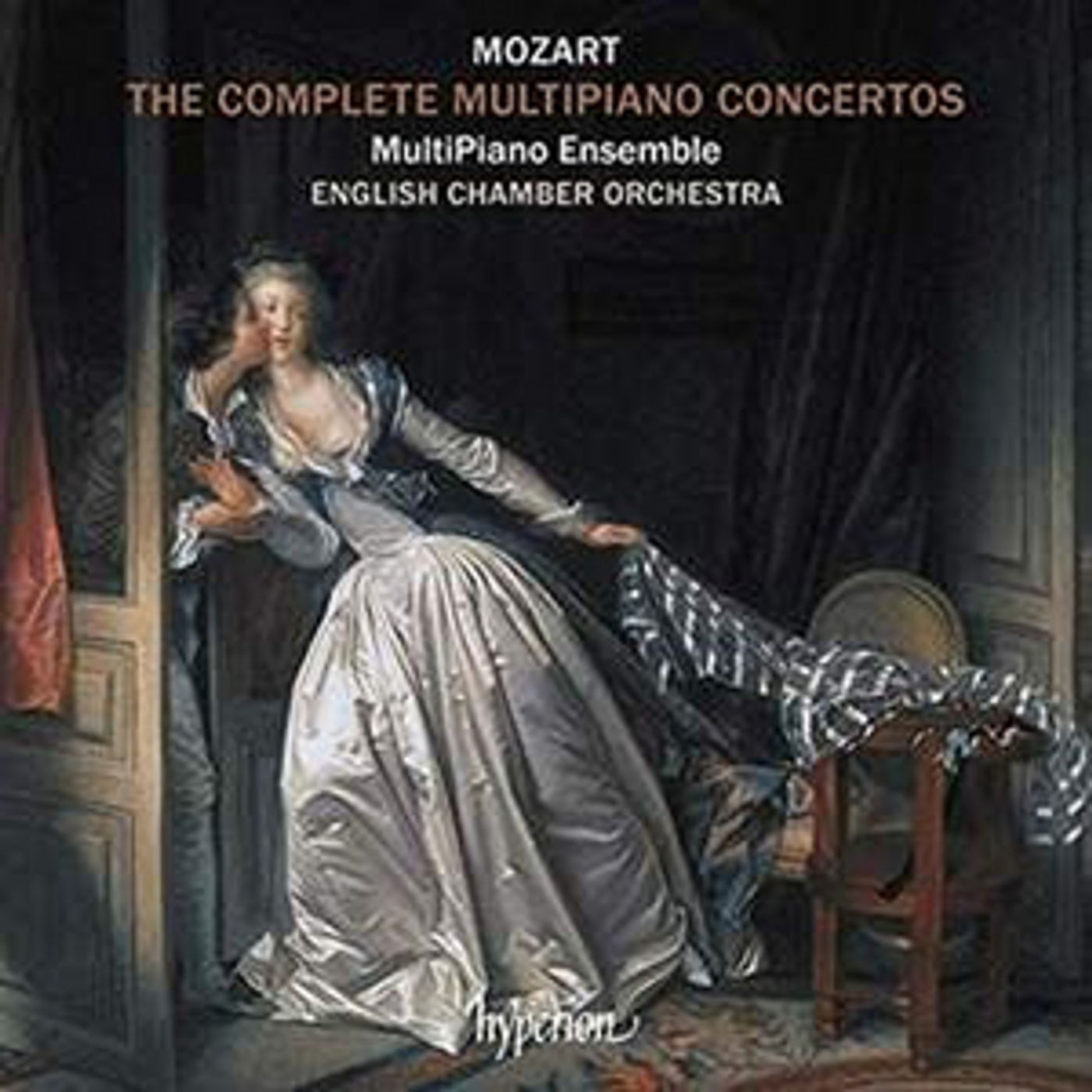MultiPiano Ensemble and Hyperion to Release 'New' Mozart Work
The new completion includes the writing of the missing development section based on Mozart's own ideas, a candenza and a short coda.

The MultiPiano Ensemble will focus on Mozart for its first-ever commercial recording, alongside the English Chamber Orchestra, on Hyperion Records. And the album, "Mozart: The Complete Multipiano Concertos" includes, alongside the well-established Concerto for Two Pianos and Orchestra K365, and the Concerto for Three Pianos and Orchestra K242, an important new addition to the piano duet repertoire. Tomer Lev has completed and arranged for two pianos and orchestra, the unfinished Larghetto And Allegro in E flat major.
Pianists, composers and musicologists in the past have composed completions for this fragment (which probably dates from 1781), among them Mozart's contemporary Maximilian Stadler and, after its rediscovery in 1963, Paul Badura-Skoda and Robert Levin. But all completed it for two pianos only. Lev, a prominent pianist himself and Director of the Buchmann-Mehta School of Music (BMSM) at Tel Aviv University - MultiPiano is an official BMSM ensemble, comprised of faculty and outstanding students - felt this to be a misunderstanding of Mozart's intentions.
As he writes in his booklet note to the new album, "Mozart's fragment contains many sections that resemble typical writing for an orchestral tutti - added to which there is a constant interplay between passages that are quintessentially pianistic and others that seem either to mimic or actually call for an orchestra. This constant kind of role-playing game is one of the trademarks of Mozart's concertante works for keyboard solo instruments and orchestra. So the logic for exploring such a version - fundamentally different from its predecessors - seems sound.
Further to the above, modern research shows that Mozart's choice of musical keys is always very specific and deliberate, often precisely depending on the idiom for which he was composing. The tonality Mozart chose for this work, E flat major, is barely ever used in his writing for solo piano, and not even used once for his numerous compositions for two pianos or piano duet.
In striking contrast, E flat major is Mozart's favourite key for his concertante works for solo instruments and orchestra, having written no fewer than nine (!) different concertos in E flat, of which four are for piano (or pianos) with orchestra. It seemed yet another strong clue that the idea of giving this fragment the shape of a concertante work is worth exploring.
The new completion therefore included the writing of the missing development section based on Mozart's own ideas, a candenza and a short coda. The tutti-like passages were orchestrated and, Lev writes, "a subtle orchestral accompaniment was added to some of the solo sections." Thus, the album presents a new addition to the repertoire for two pianos and orchestra, in a completion of which, it is to be hoped, Mozart would have approved!
Certainly the composer was dedicated to multi-player piano music throughout his life, and his two great multipiano concertos are also presented here. Both are masterpieces. Indeed, the third movement of the Concerto For Two Pianos And Orchestra, Lev writes, "...can easily be considered one of the finest examples of wit and humour in Mozart's music, if not in the entire Viennese Classical repertoire. In line with common practice of the time, a tuneful rondo theme reappears throughout the movement, but with each recurrence the music stops surprisingly on a different pivotal chord, after which an abrupt change of character leads to a distinctly different atmosphere. The overall effect of these surprising pivots is overwhelming, with Mozart managing to demonstrate that there is almost no limit to his creative powers, as he guides one tune-across multiple hands-to seemingly countless resolutions."
Aside from Tomer Lev, the MultiPiano Ensemble members featured on the recording are Berenicka Glixman, Daniel Borovitzsky and Alon Kariv. The recording was made at Henry Wood Hall in London, and was produced by Andrew Keener. It will be released by Hyperion on 2nd April.
For more details on the release see here.
Videos
